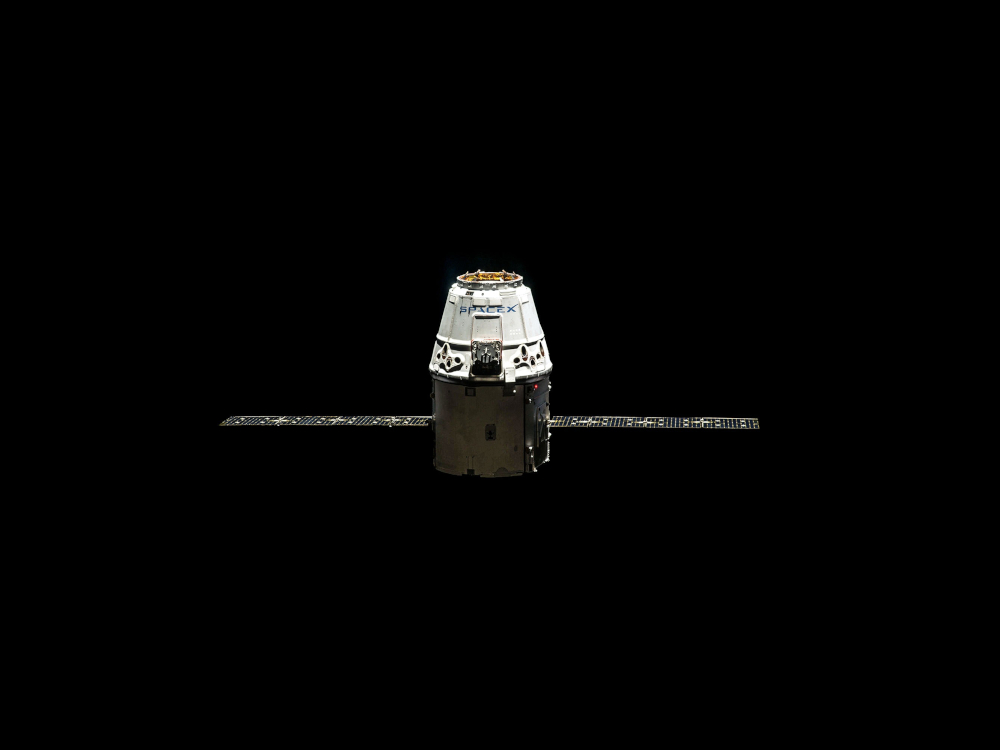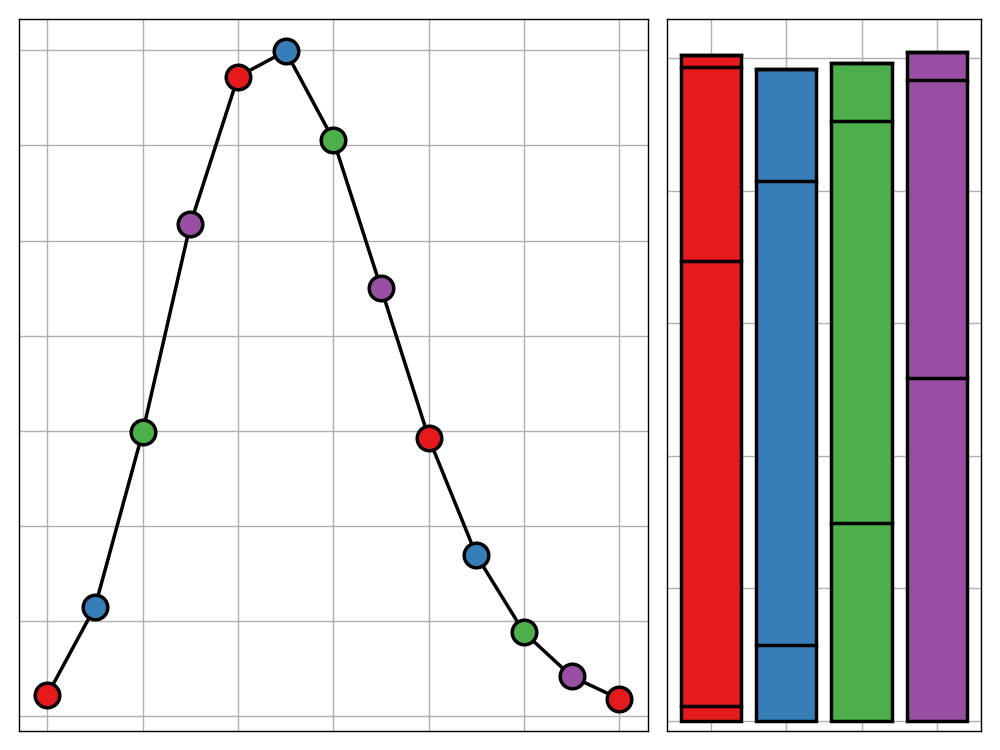
Recap: Terminal Velocity
If you’re already familar with the mechanics of free fall in a non-constant gravitational field, feel free to skip to the final (third) section.
Most people who studied Physics at a high school level should be familiar with notion of terminal velocity. It is the effective “speed limit” for a specfic object falling in a fluid (usually air). This occurs because the drag force (e.g. air resistance) on an object increases with speed, until it is equal to the force of gravity. At this point, the net force on the object is zero, and it stops accelerating. The object is now at terminal velocity.
Mathematically, the gravitational force on an object of mass $m$ is given by,
$$F_g = mg,$$
where $g$ is the acceleration due to gravity (roughly $9.81 \mathrm{m/s^2}$ on Earth). Importantly, this force is independent of the object’s speed. On the other hand, an idealised form of the drag force is given by,
$$F_d = \frac{1}{2} \rho C_D A \times v^2.$$
There are a lot of constants in this expression which are not required for our purposes (full details can be found here). Instead the important thing is that the drag force is proportional to the square of the object’s speed $v$, meaning that it will keep increasing as we accelerate until it is equal to the gravitational force. At this point, the net force on the object is zero, and it stops accelerating, and we remain at this terminal velocity indefinitely.
It is worth noting that drag is a mechanical force. That is, rather than being generated by a force field (such as with gravitational or electromagnetic field), it is generated by the interaction and contact between the atoms of the object and those of the fluid it is travelling through. This means that in a vacuum, there is no drag force, and so there is no terminal velocity.
This may lead one to conclude that an object dropped in a vacuum will continue to accelerate indefinitely, reaching arbitrarily high speeds (or more accurately arbitrarly close to the speed of light if we account for relativistic effects). In fact, it was an educational YouTube video suggesting this that was the exact inspiration for me writing this post. As intuitive as this may seem, it is not true: even in a vacuum, a falling object has a maximum speed it can reach.
That said, there is some truth to the original claim. Specifically, if the object is given an arbitrary large intitial velocity, the absense of drag does mean that it will not lose this speed and drop to a lower terminal velocity. In fact, it will continue to accelerate, though it will still be unable to reach an arbitrarily high speed.
Recap: Newton’s Law of Universal Gravitation
The expression for gravitational force we used above is actually only an approximation that holds for objects near the surface of the Earth, built on the assumption that over short distances, the graviational force on an object is roughly constant. In reality, this is far from the truth.
Going forwards, lets consider an asteroid of mass $m$ falling towards a planet of mass $M$ from an initial stationary position. The gravitational force on the asteroid is dependent on the current distance $r$ (for radius) between the asteroid and the planet,
$$
F_g = \frac{GMm}{r^2},
$$
where $G$ is the universal gravitational constant ($\approx 6.67 \times 10^{-11} \mathrm{N \cdot m^2 \cdot kg^{-2}}$). This relation is known as Newton’s law of universal gravitation.
In English, this says that the gravitational force is inversely proportional to the square of the distance between the two objects. That is, the further away the asteroid is, the weaker the gravitational force. It is clear that this is much more sensible expression for gravitational force compared to the distance-independent approximation we used above. Otherwise, we would expect that the gravitational pull from the Earth would be the same whether we were standing on the surface or on the moon, which is certainly not the case.
Terminal Velocity in a Vacuum
By applying a sprinkling of calculus, we can use this expression for gravitational force to derive an expression for the velocity of the asteroid as a function of its distance from the planet.
Mathematical Derivation
The motion of the asteroid is governed by the differential equation,
$$
\frac{d^2r}{dt^2} = \frac{GM}{r^2}.
$$We multiply both sides by $\frac{dr}{dt}$ and integrate with respect to $t$. The left hand side gives,
$$
\int_0^t \frac{d^2r}{dt^2} \frac{dr}{dt} dt =
\int_0^t \frac{dv}{dt} v
= \int_0^v v dv
= \frac{1}{2} v^2,
$$whilst the right hand side gives,
$$
\int_0^t \frac{GM}{r^2} \frac{dr}{dt} dt =
GM \int_R^r \frac{1}{r^2} dr =
GM \left(\frac{1}{r} - \frac{1}{R}\right).
$$Equating the two sides (noting that $v(0) = 0$) and rearranging gives the expression for $v(r)$ below.
Suppose that the asteroid begins its descent at a distance of $R$ from the planet’s centre. Then, the velocity $v$ of the asteroid at a distance $r$ from the planet’s centre is given by,
$$
v(r) = \sqrt{2GM} \sqrt{\frac{1}{r} - \frac{1}{R}}.
$$
At first glance, this expression seems to suggest an unbounded velocity is possible. Indeed, as the distance $r$ of the asteroid tends to zero, the velocity does tend to infinity. Importantly, though, this is not the distance from the planet’s surface, but from its centre. In reality, the planet has a non-zero radius $\rho$, and so the asteroid will never reach a distance of zero from the planet’s centre. Instead, when it collides with the planet it will have a velocity of,
$$
v_\textrm{final} = \sqrt{2GM} \sqrt{\frac{1}{\rho} - \frac{1}{R}}.
$$
Therefore, even when we consider the most extreme case of an asteroid falling from an infinite distance away ($R = \infty$), it will still have a finite velocity of,
$$
v_\textrm{final} = \sqrt{\frac{2GM}{\rho}},
$$
when it collides with the planet. Although not a terminal velocity in the traditional sense, this is still a maximum velocity that the asteroid can reach: a terminal velocity in a vacuum, if you will.
Mathematical Tangent
By using the identity,
$$
\int \sqrt{\frac{x}{c - x}} dx = c \tan^{-1} \left( \sqrt{\frac{x}{c-x}} \right) - \sqrt{x(c - x)},
$$one can show that the collision will occur at time,
$$
T = \sqrt{\frac{R}{2GM}} \left[R \tan^{-1} \left( \sqrt{\frac{R}{\rho} - 1} \right) - \sqrt{\rho(R - \rho)}\right].
$$As $\rho \to 0$, this becomes,
$$
T = \frac{\pi}{2} \sqrt{\frac{R^3}{2GM}}
$$



